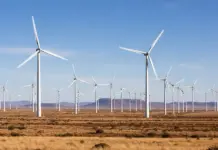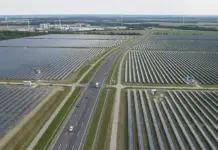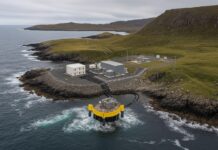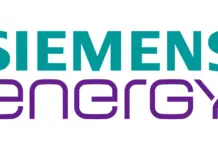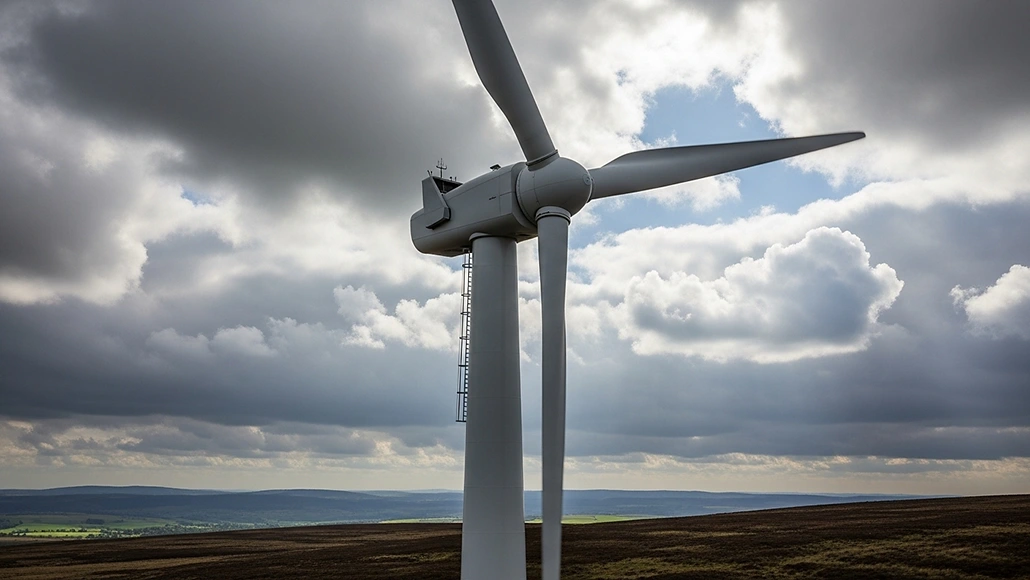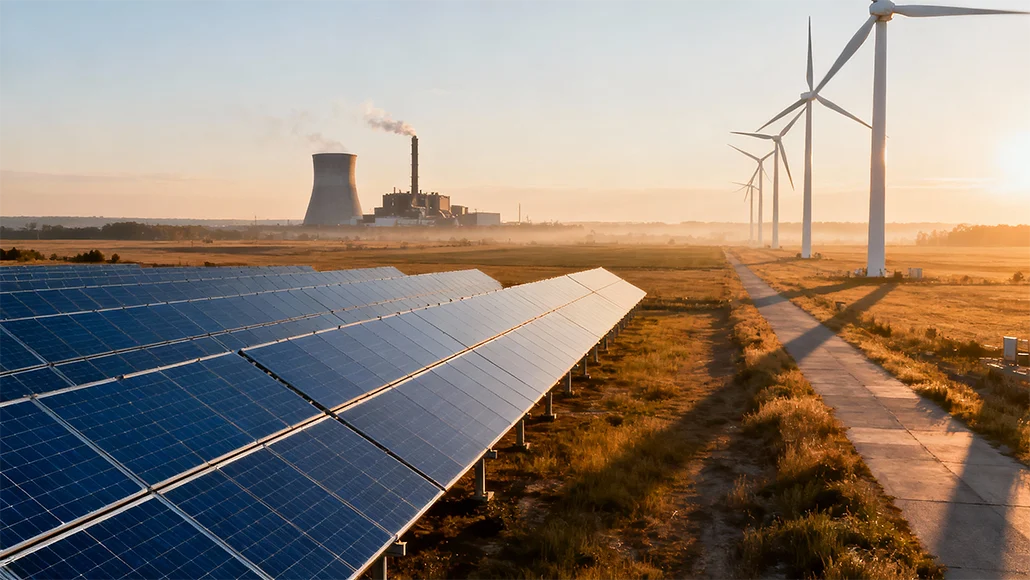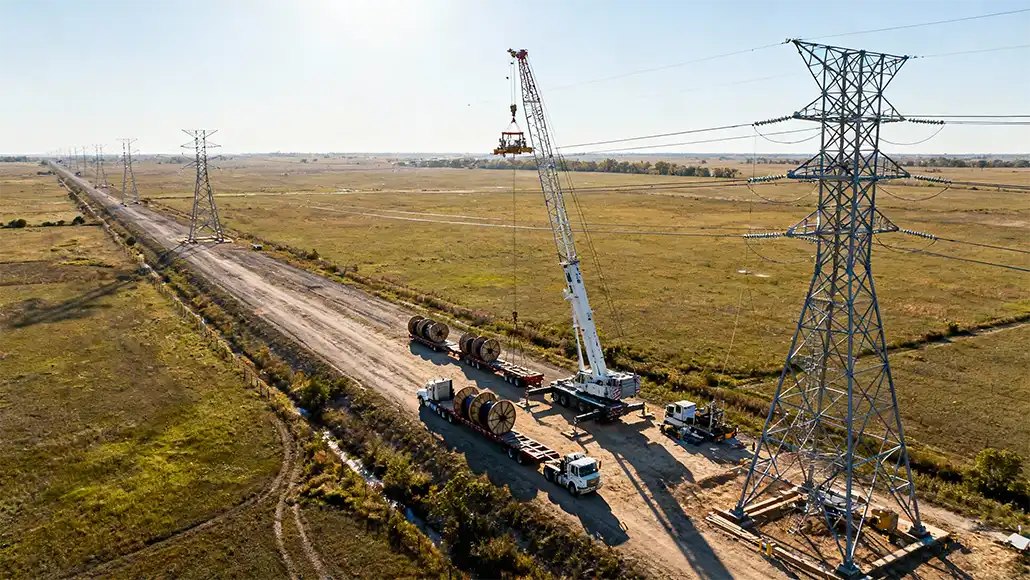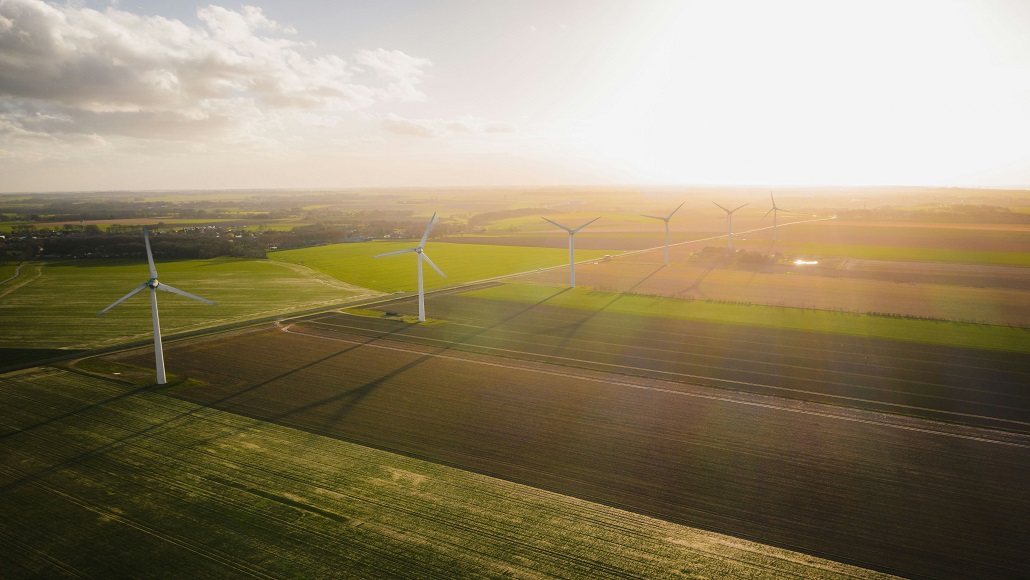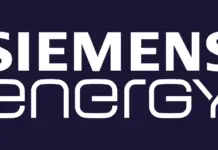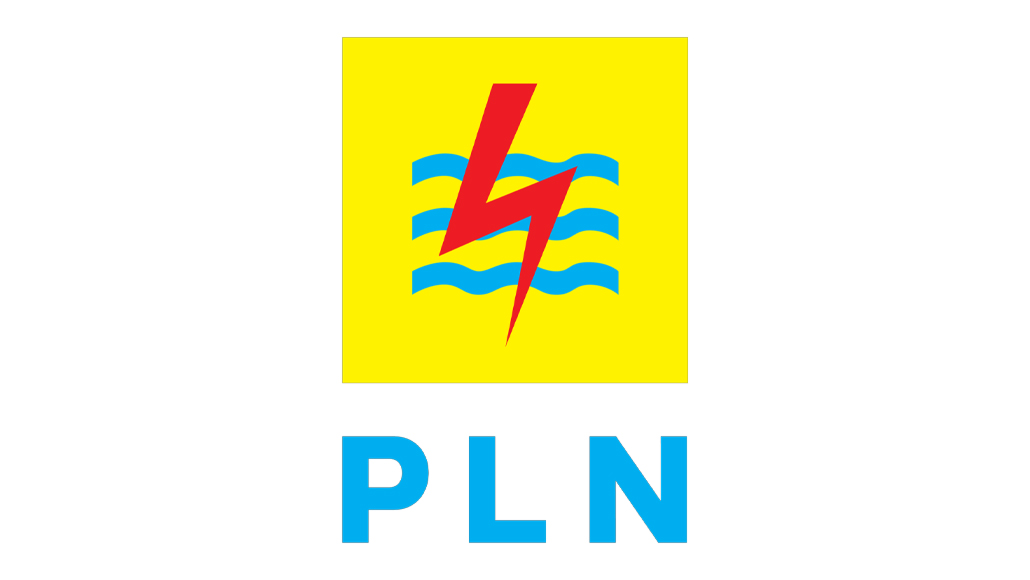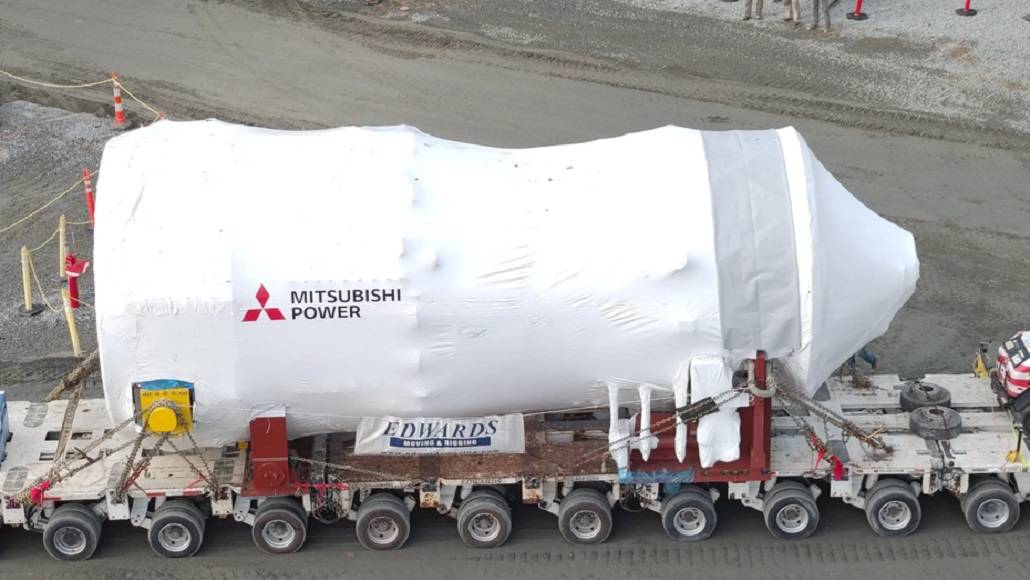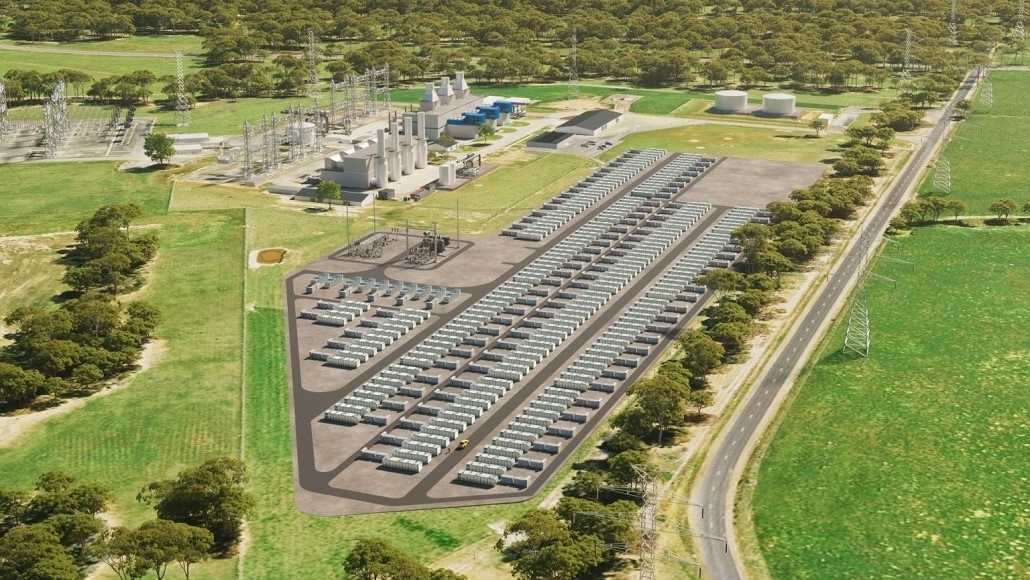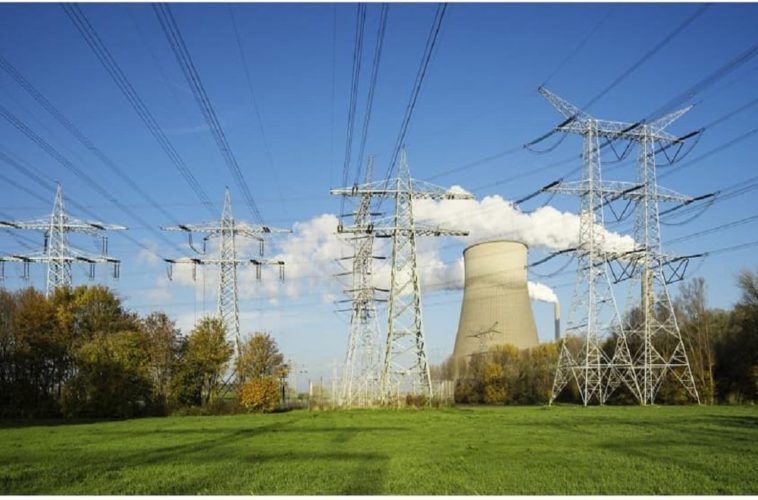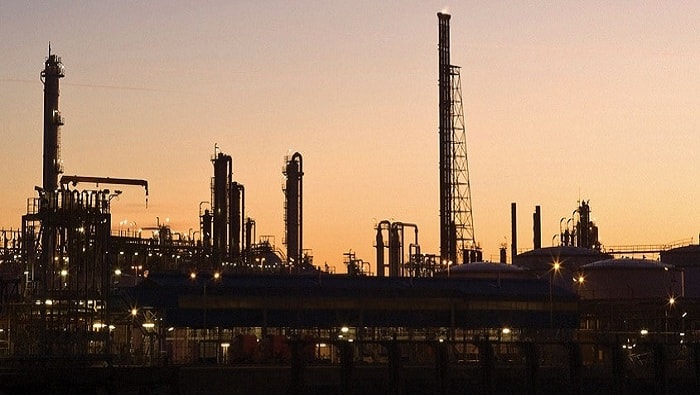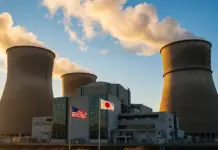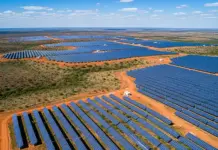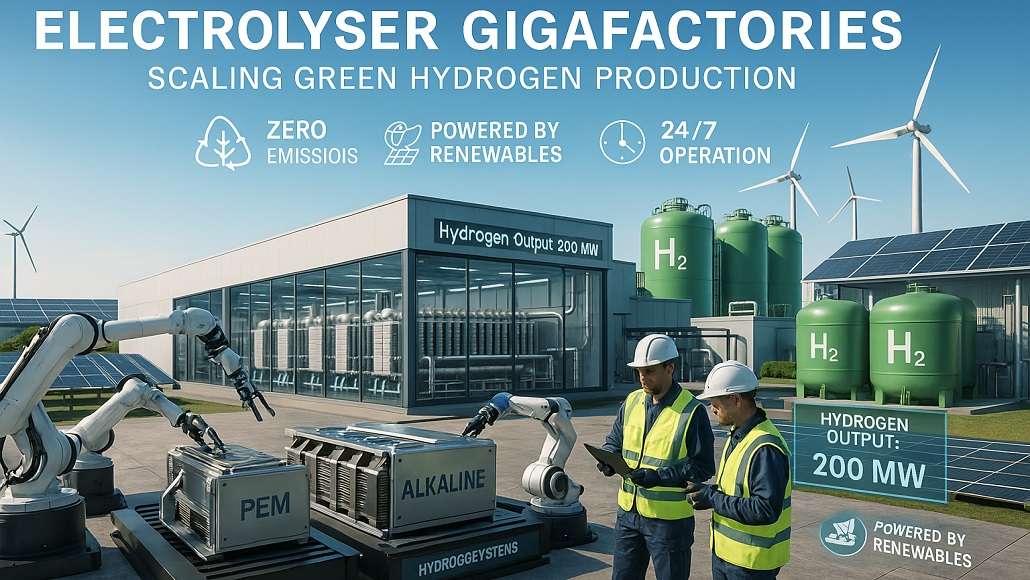Green hydrogen is becoming an essential cornerstone of the world’s transition to a carbon-neutral energy economy. Generated by water electrolysis from renewable energy sources, green hydrogen provides a clean alternative to conventional fossil fuels for industries, transportation, and power generation. The ability to supply the growing demand for green hydrogen will depend on how quickly electrolyser output increases.
Electrolysers, which use electricity to split water into hydrogen and oxygen, are the foundation of green hydrogen production. The industry is concentrating on the construction of electrolyser gigafactories, which are enormous manufacturing facilities that can produce gigawatt-scale electrolyser units annually, in order to enable mass production. Gigafactories will play a pivotal role in bringing down costs, increasing deployment, and making green hydrogen an option that is affordable and readily available as an energy carrier.
The Rising Demand for Green Hydrogen
The demand for green hydrogen is being driven by ambitious decarbonization goals established by governments and industries globally. Governments in nations such as Germany, Japan, and the United Arab Emirates have announced national hydrogen strategies to cut greenhouse gas emissions, while industries ranging from steel production to aviation and shipping are hugely investing in hydrogen-based technologies. Much of the demand for hydrogen is likely to be supplied by green hydrogen, as long as the production capacity is available.
Electrolyser gigafactories are key to servicing this demand, since they allow electrolysers to be produced in large quantities at economies of scale and thereby lower cost and become more competitive for green hydrogen.
What are Electrolyser Gigafactories?
Electrolyser gigafactories are massive production plants intended to manufacture electrolysers in industrial capacities, usually expressed in terms of gigawatts of production capacity annually. For easier and more efficient production, the factories use automation, advanced assembly lines, and modular building.
Gigafactories take the advantage of economies of scale because they house several manufacturing processes within one plant. Bulk buying and streamlined supply chains, for instance, cut costs on raw materials, components, and shipping. Economies of scale are another manner in which automated production lines can reduce labour costs and increase manufacturing.
Types of Electrolysers Produced in Gigafactories
Gigafactories produces a variety of electrolysers, each designed for a certain use or environment. The three most often recognised forms are solid oxide, proton exchange membrane (PEM), and alkaline.
- Alkaline Electrolysers: Alkaline electrolysers are the most modern and cost-effective approach for large-scale industrial hydrogen production. Gigafactories focus on making their systems more scalable and durable.
- PEM Electrolysers: PEM electrolysers with great efficiency and versatility enable incorporation with renewable energy sources. Gigafactories use better catalyst materials to produce PEM electrolysers. This further helps in reducing costs and increase efficiency.
- Solid oxide electrolysers: Solid oxide electrolysers are more efficient since they work at high temperatures. They are ideal for steam and hydrogen cogeneration applications.
Advantages of Up-scaling Electrolyser Manufacturing
Beyond satisfying demand, the development of electrolyser gigafactories has other benefits. These manufacturing plants means lowering costs, building technological capacity, and supplier flexibility, all essential for scaling green hydrogen production.
- Cost Reduction Through Economies of Scale
One of the largest advantages to gigafactories is to lower the cost of producing electrolysers, through economies of scale. Mass-producing standardised components lowers per-unit costs, making electrolysers available for a far wider range of applications.
Moreover, the use of robots and automated production in gigafactories has enhanced manufacturing speed and accuracy. This further resulted in lower unit costs.
For instance, fully automated assembly lines can mass produce complex components, such as electrode stacks, with less human intervention. This leads to reduce labour costs and improves consistency.
The lowered cost of electrolysers directly benefits a reduced levelized cost of hydrogen (LCOH), thus greening hydrogen to compete more favorably with fossil fuels.
- Technological Innovation and Standardization
Gigafactories are technical innovation centres that conduct R&D on innovative materials, designs, and manufacturing technologies. Centralising R&D help the manufacturers to swiftly develop and adopt novel technologies, hence increasing electrolyser efficiency, durability, and performance.
For example, the development of novel catalysts such as non-platinum group metals is being accelerated in gigafactories that help to tackle the material cost challenges associated with PEM electrolysers. Similarly, improvements to membrane materials are also enhancing the lifespan and operational performance of electrolyser systems.
Standardization is another excellent benefit of gigafactories. The standardization of electrolysers requires manufacturing according to standard specifications making things easier for installation, maintenance and integration, lowering project costs and lead times overall.
- Resilience of Supply Chains
By integrating production and reducing reliance on suppliers in specific regions, gigafactory manufacturing provides a new level of robustness to hydrogen supply chains. For example, electrolyser developers rely on a small number of suppliers throughout the world for many of its critical components, such as membranes and catalysts. Gigafactories will help to expand supply chains by localising them, lowering the risk of trade disruptions and geopolitical instability.
Global Landscape of Electrolyser Gigafactories
Many countries are competing for the lead in green hydrogen technology as a result of the rapid expansion of electrolyser gigafactories, leading to a global trend.
In Europe, the leaders are Germany and Spain, with proposals for gigawatt-sized plants aligned with the European Union’s aggressive hydrogen strategy. The United States is also far along, backed by incentives of the Inflation Reduction Act, which encourages the production of clean energy technology domestically. China and Japan in Asia are heavily investing in gigafactories to leverage their leading position in manufacturing capabilities as well as local hydrogen demand.
Table 1: Notable Electrolyser Gigafactories Around the World
| Location | Manufacturer | Annual Capacity | Key Focus |
| Germany | Siemens Energy | 1 GW | PEM Electrolysers |
| United States | Plug Power | 2 GW | Integrated Hydrogen Systems |
| China | LONGi Hydrogen | 1.5 GW | Alkaline Electrolysers |
| Spain | Iberdrola & Nel Hydrogen | 1 GW | Streamlined Manufacturing Processes |
Challenges in Scaling Electrolyser Gigafactories
While there are benefits, scaling gigafactories has its challenges that need to be met to facilitate their long-term sustainability.
- High Initial Capital Investment
Building gigafactories requires a significant initial financial expenditure, particularly in automated gear, advanced materials, and massive facility sizes. Closing the finance gap typically entails public-private partnerships, government subsidies, and international cooperation.
- Material Scarcity and Supply Chain Bottlenecks
Scarce elements like iridium, platinum, and expert membranes are critical to the construction of PEM electrolysers, but they are in short supply. Meeting this challenge necessitates investment in material recycling, the development of substitute catalysts, and the establishment of stable supply networks.
- Policy and Regulation
Supportive norms and policies are essential for the growth of gigafactories. These include green hydrogen production licenses, efficient permission procedures, and the harmonisation of global electrolyser standards. Fragmented regulatory regimes pose challenges for growing gigafactories, emphasising the importance of international engagement and collaboration.
Future Outlook for Electrolyser Gigafactories
The future outlook for electrolyser gigafactories is bright as many investment dollars flow in to both the public and private sector. It is anticipated that new technologies, such as blockchain-based supply chain transparency and AI-based process optimization, would be implemented to further maximize gigafactory efficiency.
Furthermore, the development of hybrid electrolysers has the capability of using both conventional and renewable energy sources. This brings up possibilities for increasing hydrogen production in areas where renewable energy supply is uncertain.
As the need for green hydrogen develops, gigafactories will play an important role in facilitating a sustainable energy transition by making hydrogen technologies more accessible, affordable, and scalable to businesses and communities around the globe.
Conclusion
Gigafactories for electrolyser plants are an important step that heps in scaling green hydrogen production to meet the demands of a decarbonised energy future. The units reduce costs by using economies of scale, promoting technological innovation. Also, strengthening supply networks allow hydrogen to be utilised widely as a clean energy carrier.
Despite material shortages and legal barriers, progress has been made through international cooperation and investment, which is promising. The development of electrolyser gigafactories showcases the vast potential of green hydrogen, transforming the energy sector and producing a cleaner energy.


